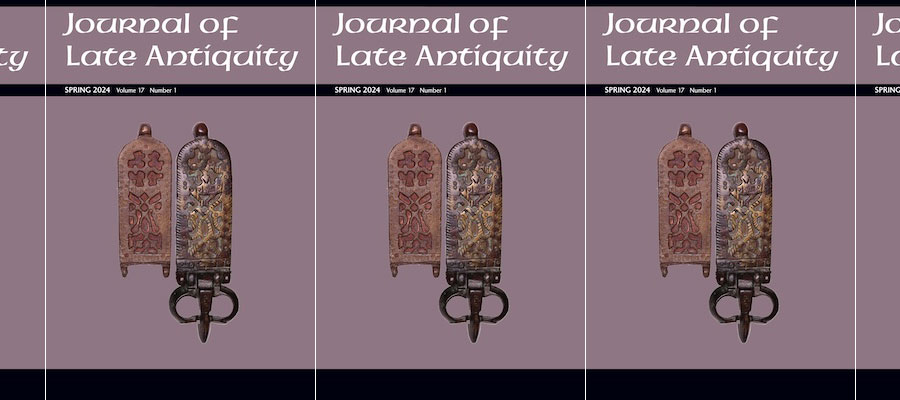Journal of Late Antiquity, volume 17, number 1 (Spring 2024).
CONTENTS INCLUDE
The "Column of the Goths" and Its Place in Constantine's New Capital
Michael A. Speidel
The column monument in Istanbul's Gülhane Park, commonly known by its colloquial name "column of the Goths," bears a well-known inscription on its pedestal which states that this monument was dedicated to Fortuna Redux on the occasion of a Roman victory over the Goths. The monument, however, has not attracted much scholarly attention, probably because no consensus has yet been reached regarding its date. An inspection of the inscription in Gülhane Park and a fresh analysis of its text suggest that the emperor Constantine erected the "column of the Goths" in the context of the formal dedication of his new capital in 330 as a memorial for his victory over the Goths in 328 or 329. The monument highlights Constantinople's extraordinary political nature as more than just another imperial residence in the style of the tetrarchy. It bears witness to the emperor's efforts to give Constantinople the status of a second Rome as well as his determination, above all else, to establish his city as the home of triumphant victories. Moreover, the monument's dedication to Fortuna Redux, is another token of Constantine's at least partially ambiguous religious policy, which allowed traditional symbols to be visible in his new capital of Constantinople.
Eastern Mediterranean Fineware Imports to the Iberian Peninsula, 300–700 ce, and the Economic Impact of the Justinianic Pandemic
Henry Gruber
Recent excavations in Spain and Portugal have recovered abundant fineware ceramics imported from the eastern Mediterranean and dating to the period after the fall of the western Roman Empire. The date of the latest sherds has been interpreted as showing the survival of trans-Mediterranean trade into the seventh century. However, archaeologists have tended to minimize a collapse in the volume of these imports around 550 ce. This article seeks to adjudicate between a survivalist interpretation (based on the continuity of some trade) and a catastrophist interpretation (based on decreased volume of trade). It analyzes the import volume and geographic distribution of ceramics at over 4,000 Iberian sites, 202 of which contain late Roman fineware imported from the eastern Mediterranean. The data suggest a steady increase in imports beginning by 450 ce, followed by a rapid drop in both import volume and network participation around 550 ce, with no observed recovery. This drop's magnitude has not yet been fully analyzed, and recent excavations in the eastern Mediterranean have allowed it to be fixed with greater chronological precision. Four causes are considered, three (warfare, shifting fiscal obligations, and changing tastes) that have been already proposed, and a fourth (pandemic disease) that has not.
An Exceptional Late Antique Belt Buckle Plate from Jaffa: From Metalworking Technology to Cultural Biography
Matasha Mazis, Dana Ashkenazi, and Alexander Fantalkin
This paper introduces a technological and cultural biography of an exceptional copper-based belt buckle plate from ancient Jaffa. The exploration of intricate metalworking techniques and the cultural significance of this find provide new insights into late antique material culture in the Levant. Although similar buckles appear in museum collections around the world, few have archaeological provenience and, to date, none have been analyzed and published in terms of their material characteristics. This study establishes a metallurgical database for future comparative analyses, employing X-ray fluorescence spectrometry and scanning electron microscopy with energy-dispersive X-ray spectroscopy to characterize the buckle's composition and manufacture. The results reveal the use of recycled metals, casting, cold fastening, and decorative finishing techniques, including contouring of the openwork shapes. The analysis finds no evidence of enameling, challenging existing theories about these buckles. A comparison of the crafting techniques and design elements of this belt buckle plate with those of similar buckles shows evidence of distinctive artisanal traditions. The socio-cultural inferences of its art and iconography are also explored in light of the geopolitical landscape after the Arab conquests. This study sheds light on the production and distribution of Levantine buckles and enriches understanding of their use in late antique culture and society.
